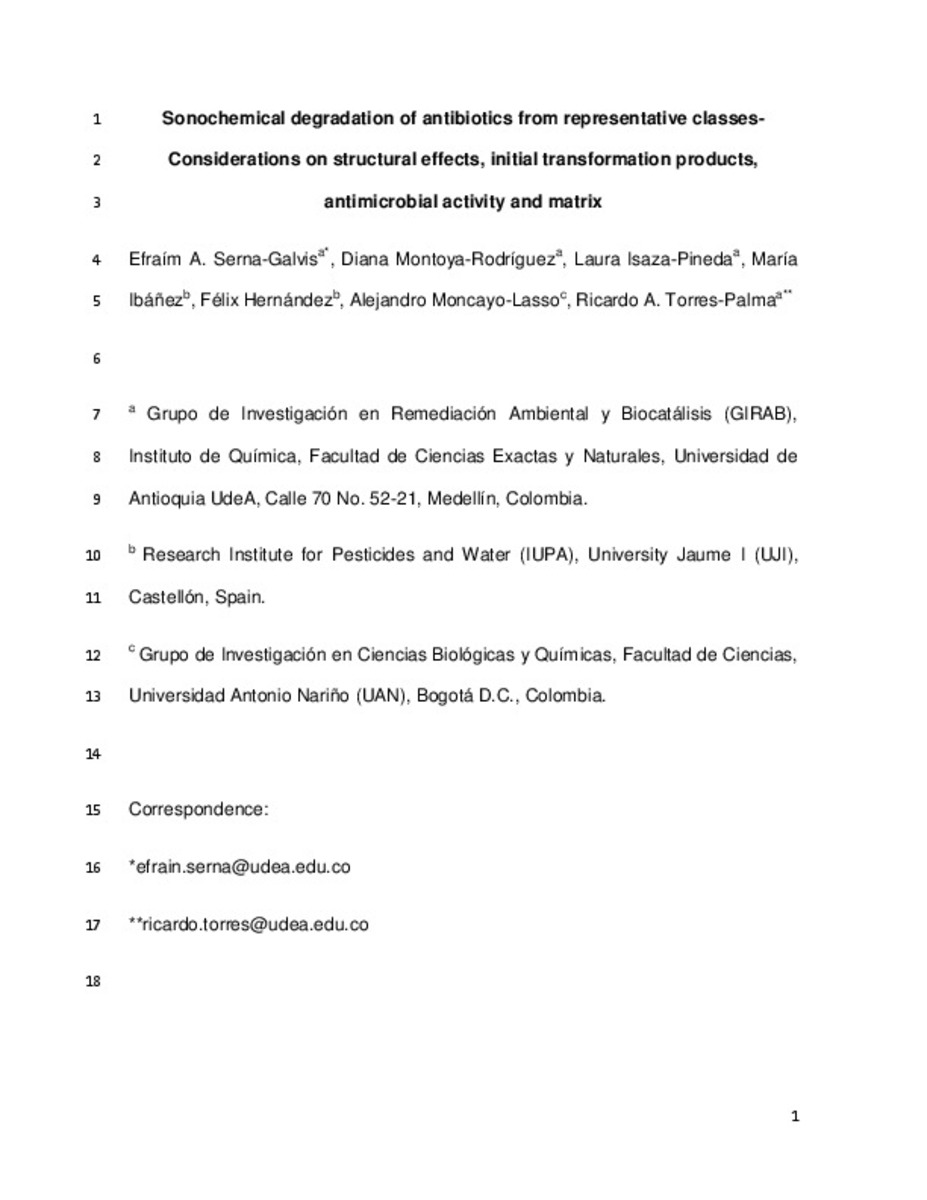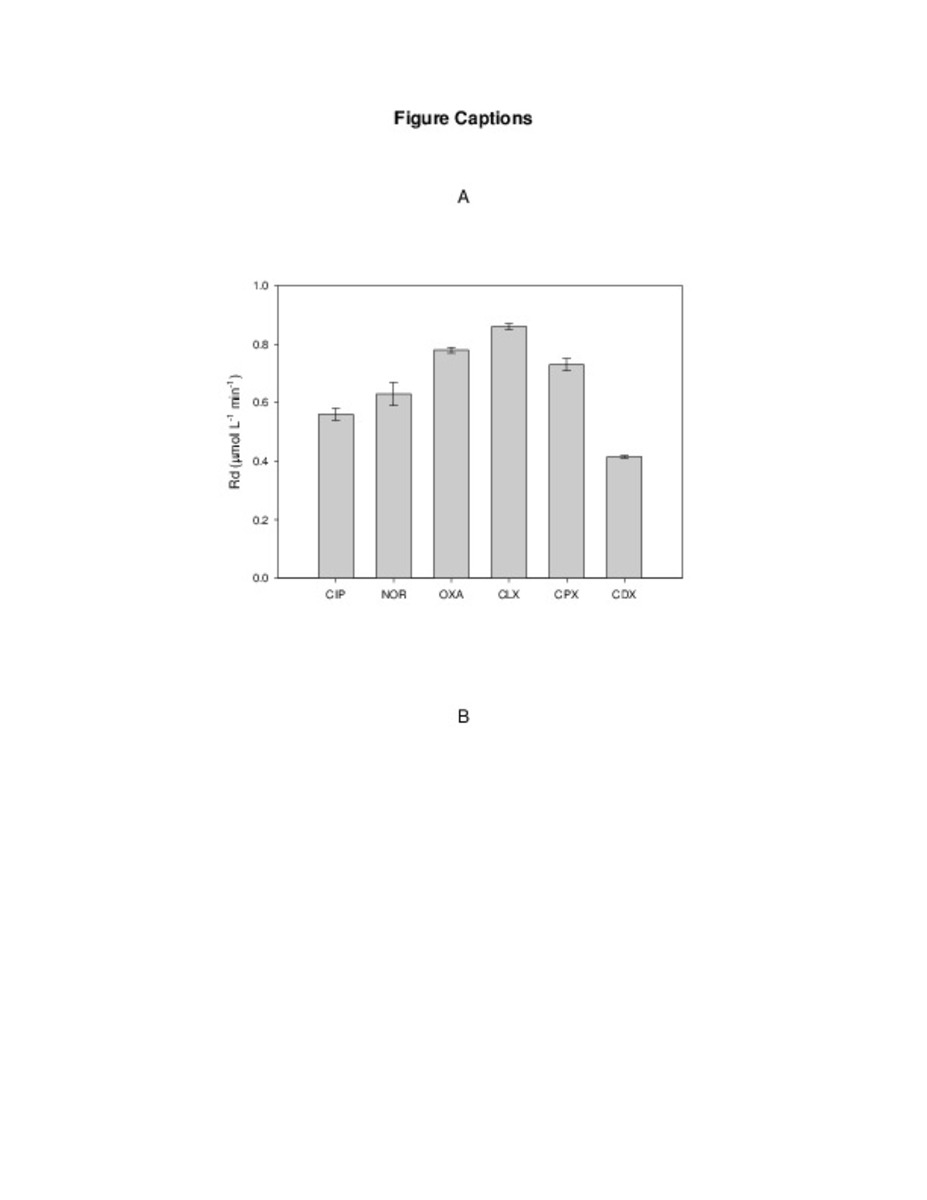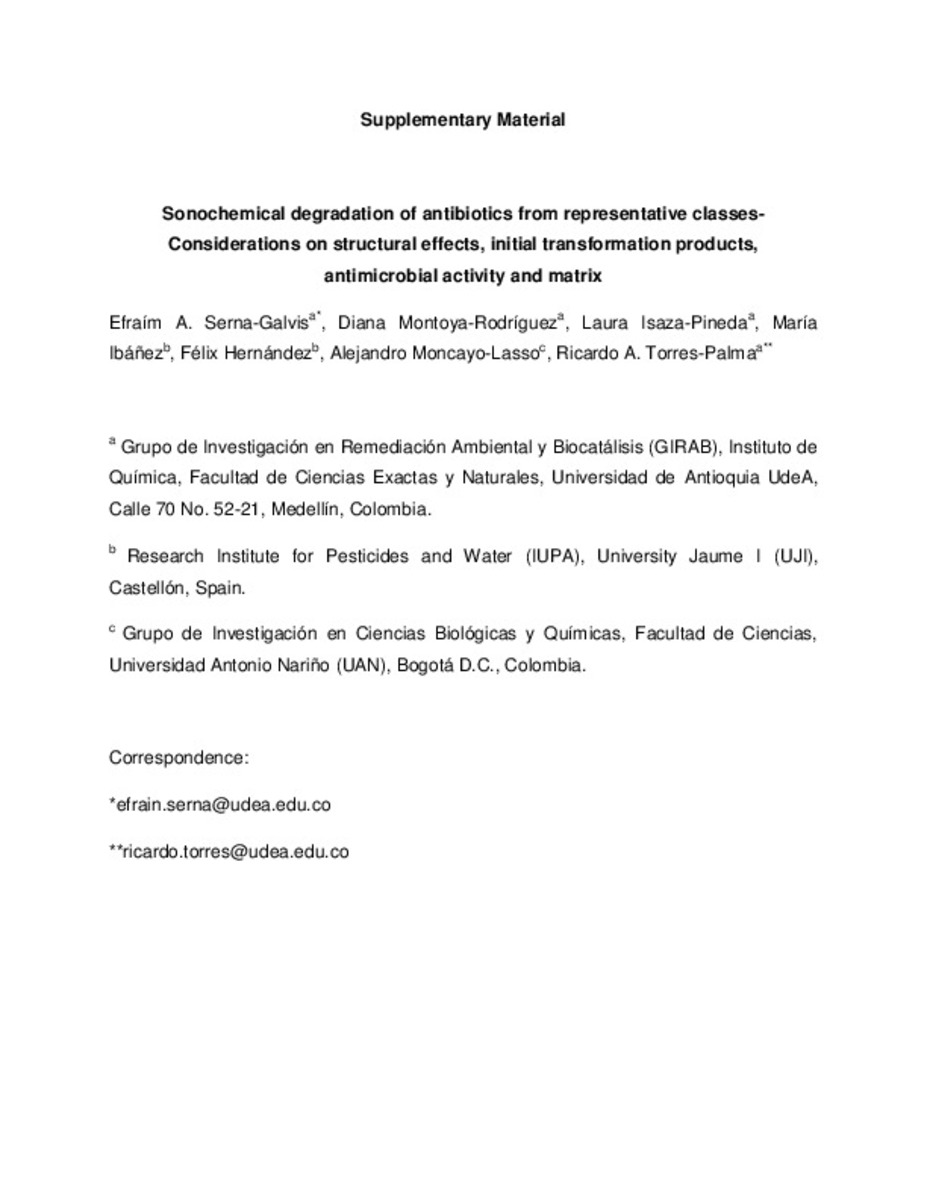Mostrar el registro sencillo del ítem
Sonochemical degradation of antibiotics from representative classes-Considerations on structural effects, initial transformation products, antimicrobial activity and matrix
| dc.contributor.author | Serna-Galvis, Efraim A. | |
| dc.contributor.author | Montoya-Rodríguez, Diana | |
| dc.contributor.author | Isaza-Pineda, Laura | |
| dc.contributor.author | Ibáñez, Maria | |
| dc.contributor.author | Hernandez, Felix | |
| dc.contributor.author | Moncayo-Lasso, Alejandro | |
| dc.contributor.author | Torres-Palma, Ricardo A. | |
| dc.date.accessioned | 2019-04-02T13:32:27Z | |
| dc.date.available | 2019-04-02T13:32:27Z | |
| dc.date.issued | 2019 | |
| dc.identifier.citation | SERNA-GALVIS, Efraím A., et al. Sonochemical degradation of antibiotics from representative classes-Considerations on structural effects, initial transformation products, antimicrobial activity and matrix. Ultrasonics sonochemistry, 2019, vol. 50, p.157-165 | ca_CA |
| dc.identifier.issn | 1350-4177 | |
| dc.identifier.issn | 1873-2828 | |
| dc.identifier.uri | http://hdl.handle.net/10234/182149 | |
| dc.description.abstract | In this work, the sonochemical treatment (at 354 kHz and 88 W L-120 ) of six relevant antibiotics belonging to fluoroquinolones (ciprofloxacin and norfloxacin), penicillins (oxacillin and cloxacillin) and cephalosporins (cephalexin and cephadroxyl) classes was evaluated. Firstly, the ability of the process to eliminate them was tested, showing that sonodegradation of these antibiotics is strongly chemical structure25 dependent. Thus, correlations among initial degradation rate of pollutants (Rd), solubility in water (Sw), water-octanol partition coefficient (Log P) and topological polar surface area (TPSA) were tested. Rd exhibited a good correlation with Log P (i.e., the hydrophobicity degree of antibiotics). The considered penicillins had the fastest elimination and from the constitutional analysis using Lemke method was clear that the functional groups arrangement on these antibiotics made them highly hydrophobics. The penicillins were degraded closer at cavitation bubble than the fluoroquinolones or cephalosporins. The investigation of degradation products showed that sonogenerated hydroxyl radical primary attacked the β-lactam ring of cloxacillin and cephalexin, whereas on norfloxacin induced a decarboxylation. On the other hand, the evolution of antimicrobial activity was also followed. It was evidenced the process capacity to remove antimicrobial activity from treated solutions, which was associated to the transformations of functional groups on antibiotics with important role for interaction with bacteria. Additionally, degradation of antibiotics having the highest (the most hydrophobic, i.e., cloxacillin) and lowest (the most hydrophilic, i.e., cephadroxyl) Rd, was performed in synthetic matrices (hospital wastewater and seawater). Ultrasound degraded both antibiotics; for cloxacillin in such waters higher eliminations than in distilled water were observed (probably due to a salting-out effect exerted by matrix components). Meanwhile, for cephadroxyl a moderate inhibition of degradation in hospital wastewater and seawater respect to distilled water was found, this was related to competition by hydroxyl radical of the other substances in the matrices. These results show the quite selectivity of high frequency ultrasound to eliminate antibiotics form different classes even in complex matrices. | ca_CA |
| dc.format.extent | 28 p. | ca_CA |
| dc.format.mimetype | application/pdf | ca_CA |
| dc.language.iso | eng | ca_CA |
| dc.publisher | Elsevier | ca_CA |
| dc.relation.isPartOf | Ultrasonics sonochemistry, 2019, vol. 50, p.157-165 | ca_CA |
| dc.rights.uri | http://rightsstatements.org/vocab/CNE/1.0/ | * |
| dc.subject | antibiotic structure differences | ca_CA |
| dc.subject | advanced oxidation process | ca_CA |
| dc.subject | matrix effects | ca_CA |
| dc.subject | water treatment | ca_CA |
| dc.subject | pollutants degradation | ca_CA |
| dc.subject | ultrasound | ca_CA |
| dc.title | Sonochemical degradation of antibiotics from representative classes-Considerations on structural effects, initial transformation products, antimicrobial activity and matrix | ca_CA |
| dc.type | info:eu-repo/semantics/article | ca_CA |
| dc.identifier.doi | https://doi.org/10.1016/j.ultsonch.2018.09.012 | |
| dc.relation.projectID | The authors gratefully acknowledge COLCIENCIAS through the projects "Remoción de antibióticos y bacterias resistentes en aguas residuales hospitalarias empleando tecnologías avanzadas de oxidación (No. 111577757323)” and “Aproximación a la Remoción Eficiente de Drogas Ilícitas y Farmacéuticas Presentes en Aguas Residuales Mediante Métodos Avanzados de Oxidación (No. 123371552034)”, as well as Universidad de Antioquia UdeA through “Programa de Sostenibilidad”, for funding the research. E.A. Serna-Galvis also thanks COLCIENCIAS by his doctoral scholarship (Convocatoria 647 de 2014). The Oscar Pozo helping in the elucidation of transformation products is much appreciated. Authors from UJI acknowledge the support from Generalitat Valenciana, Spain (research group of excellence Prometeo II 2014/023) | ca_CA |
| dc.rights.accessRights | info:eu-repo/semantics/openAccess | ca_CA |
| dc.relation.publisherVersion | https://www.sciencedirect.com/science/article/pii/S1350417718309064 | ca_CA |
| dc.type.version | info:eu-repo/semantics/submittedVersion | ca_CA |
Ficheros en el ítem
Este ítem aparece en la(s) siguiente(s) colección(ones)
-
QFA_Articles [813]
Articles de publicacions periòdiques









